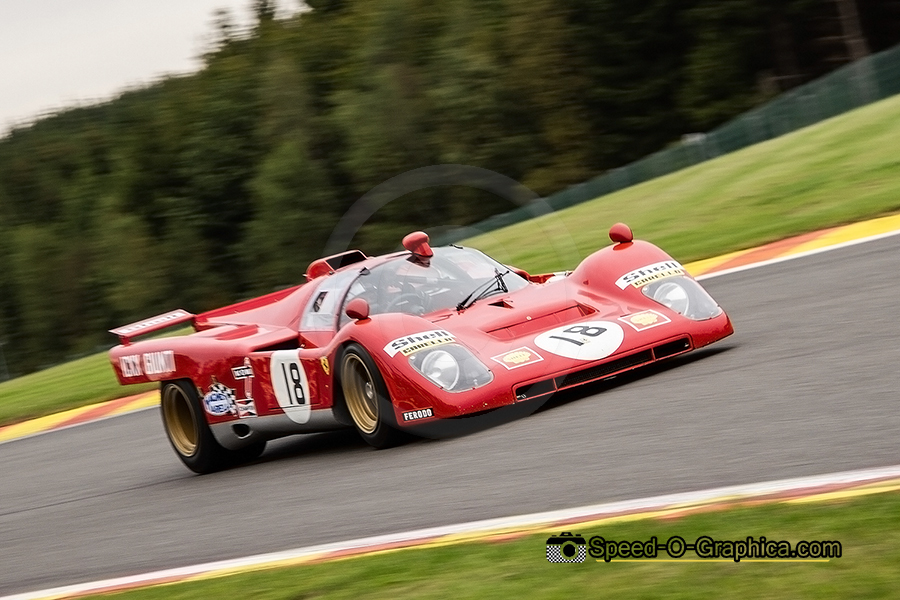Ferrari 512: The Stunning Sports Car Racer from the Seventies, Part 2

By Marcel Hundscheid / Speed-O-Graphica
Let’s continue our story on the Ferrari 512 with a look at its ultimate iteration – the 512M.
When Ferrari realised that the 512S had reached its developmental limit, they adjusted the design more radically. This led to the Ferrari 512M (Modificato), which 15 out of the original series of 25 512S variants were modified to.
The 512M featured a number of improvements, including the addition of an airbox, a forty kilogram weight reduction and an increase in output to 620hp. Besides this, the body was more angular and had a truncated tail.
Although it was previously assumed that the Porsche 917 was invincible, the Alfa Romeo Tipo 33 showed the opposite. Until 1975, the Ferrari 512 still appeared in races of the CanAm championship or its European counterpart, the Interseries.

The Ferrari 512M debuted in the hands of Jacky Ickx and Ignazio Gunti during a race of the 1970 world championship in Austria. Although the 512M was superior to the Porsche 917 in terms of speed, its reliability in particular let it down. During the debut in Austria, problems with the alternator, among other things, meant that Ickx and Gunti did not see the chequered flag.
During the race in Kyalami, the 512M showed its speed again. Ickx and Giunti won this 1000 km race convincingly, holding a two lap lead on the Porsche 917 of Jo Siffert and Kurt Ahrens by the end.
Although the Ferrari was faster than the Porsche in terms of top speed, it turned out that, especially among the private teams, the 512M was no match for the factory cars from Zuffenhausen. However, the supremacy shown by both brands prompted the FIA to implement a rigorous change in the regulations.
The FIA implemented new regulations in 1972 as Group 6 prototypes and Group 5 sports cars were both replaced by a new Group 5 sports car championship. Engines were limited up to three litres and as a result manufacturers lost their interest.

Ferrari retired the factory 512 and no longer supported customer teams with the car. Instead, Scuderia Ferrari concentrated on the Ferrari 312PB, a 3-litre sports car which already complied with the new rules of the World Championship from 1972.
Due to the new regulations both the Porsche 917 and Ferrari 512M were ineligible to race in the world championship. The main difference between Porsche and Ferrari was that the Zuffenhausen factory only developed, but left the complex operations to teams such as John Wyer, Porsche Salzburg and Martini.
Roger Penske’s American team ran the fastest 512M, scoring three pole positions in four races, as it had been developed in-house. The blue and yellow 512 sponsored by Sunoco had, among other things, a quick fuel system and a continuous rear wing. However, Penske’s 512 did not achieve much success either, as it usually failed or fell behind due to technical problems or accidents. The Ferrari 512M appeared also in the CanAm series in the United States and Canada, as well as the Interseries in Europe, although without success.
Although the Ferrari 512 was completely overshadowed by the Porsche 917, it remains an iconic model. Nowadays we regularly see Ferrari 512Ms appearing during historic races of Peter Auto and Masters Historic Racing in Europe. In this way, this iconic sports car is preserved for posterity.

